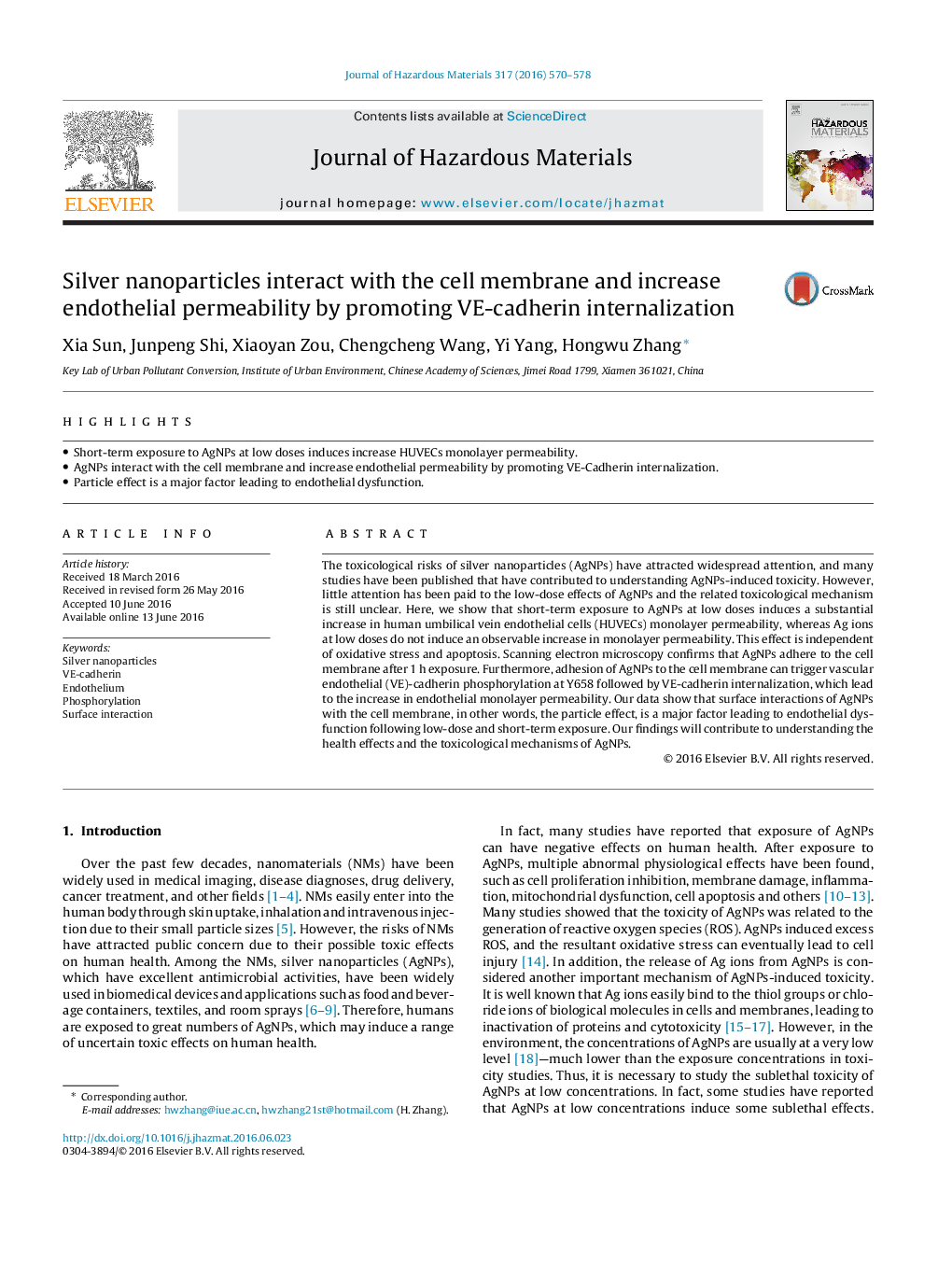| Article ID | Journal | Published Year | Pages | File Type |
|---|---|---|---|---|
| 6970344 | Journal of Hazardous Materials | 2016 | 9 Pages |
Abstract
The toxicological risks of silver nanoparticles (AgNPs) have attracted widespread attention, and many studies have been published that have contributed to understanding AgNPs-induced toxicity. However, little attention has been paid to the low-dose effects of AgNPs and the related toxicological mechanism is still unclear. Here, we show that short-term exposure to AgNPs at low doses induces a substantial increase in human umbilical vein endothelial cells (HUVECs) monolayer permeability, whereas Ag ions at low doses do not induce an observable increase in monolayer permeability. This effect is independent of oxidative stress and apoptosis. Scanning electron microscopy confirms that AgNPs adhere to the cell membrane after 1Â h exposure. Furthermore, adhesion of AgNPs to the cell membrane can trigger vascular endothelial (VE)-cadherin phosphorylation at Y658 followed by VE-cadherin internalization, which lead to the increase in endothelial monolayer permeability. Our data show that surface interactions of AgNPs with the cell membrane, in other words, the particle effect, is a major factor leading to endothelial dysfunction following low-dose and short-term exposure. Our findings will contribute to understanding the health effects and the toxicological mechanisms of AgNPs.
Related Topics
Physical Sciences and Engineering
Chemical Engineering
Chemical Health and Safety
Authors
Xia Sun, Junpeng Shi, Xiaoyan Zou, Chengcheng Wang, Yi Yang, Hongwu Zhang,
